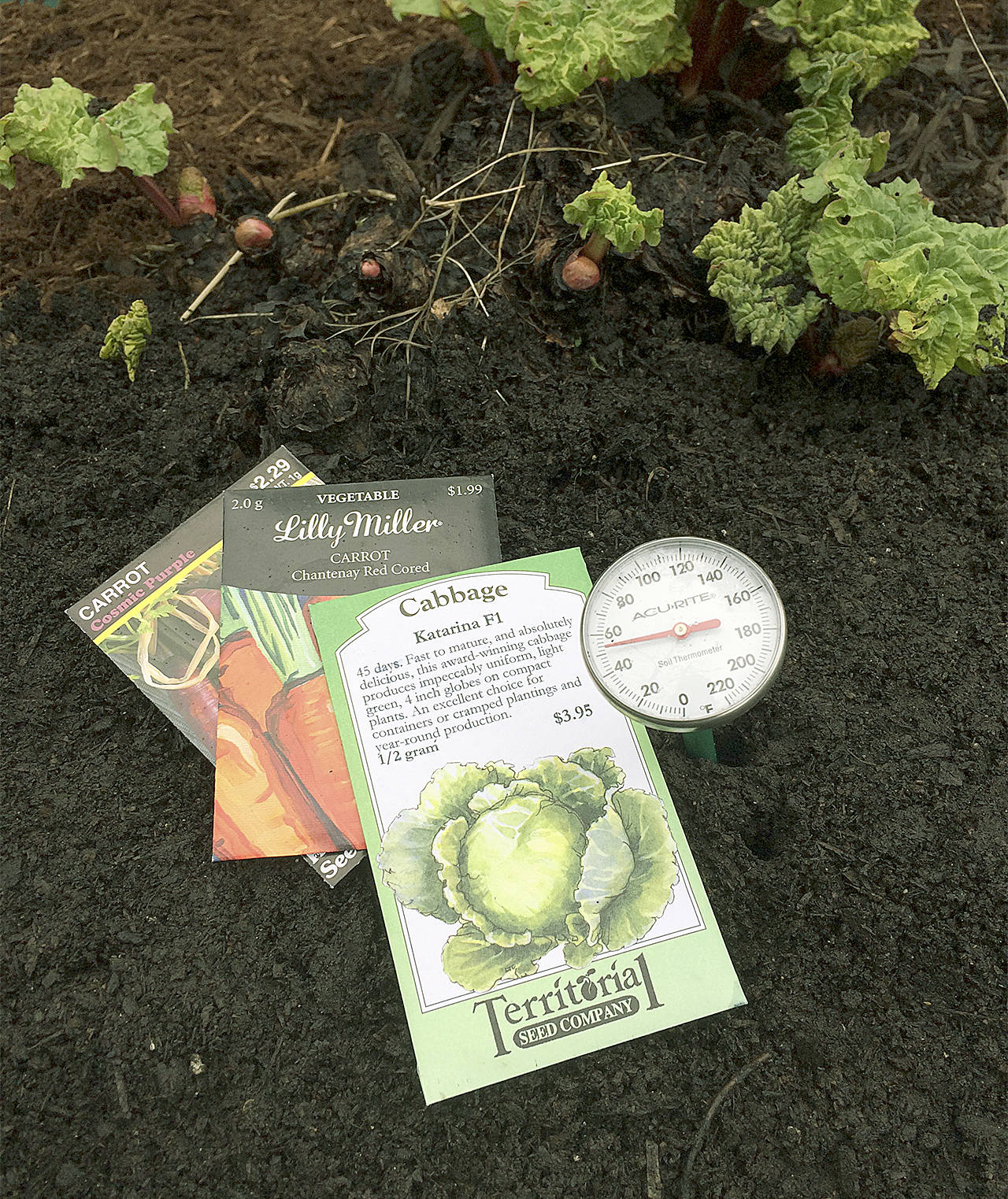So, you want to plant a vegetable garden. You have your own fresh, healthy produce. You’ve laid out and prepared your site. You’ve chosen your favorite vegetables, and maybe you even have seeds. So, when do you plant what?
First, divide your choices into cool-season and warm-season vegetables, and consider their differences. Cool-season crops are mostly leafy or root vegetables: spinach, lettuce, kale, cabbage, beets, carrots, turnips, radishes, potatoes. Warm-season crops are harvested for their fruits and seeds: tomatoes, beans, corn, squash, peppers, pumpkins, cucumbers, melons. Peas are an exception; it is a “seed plant” that does well early in our cool maritime gardens.
Cool-season vegetables need short, cool days and can be planted earlier. All plants begin their lives putting effort and energy into roots and leaves. If not harvested for these, they go on to produce fruits and seeds. This is what gardeners refer to as “bolting,” and it isn’t what you want cool crops to do.
Some cool-season vegetables can be planted before the last frost, and a second crop can be planted as the days shorten and cool into fall. Parsnips, spinach, lettuce, onion and early varieties of peas are some to consider.
Warm-season crops need higher temperatures and longer days to allow plants to develop fruit and seeds. They need more heat units.
Seed packages and general garden books would indicate that average last frost dates are the best benchmarks of when to plant. However, Aberdeen’s last frost might be March 29 one year and April 24 the next — nearly a one-month spread — so “average” data are not a strong representation of this season. Furthermore, our complex geography of differing elevations and numerous waterways means average frost dates may differ from one side of town to the other. While average last frost dates might be mid-March in downtown Montesano, they may be later to the east and earlier to the west. Thus, an average frost date often will not pertain to all gardens.
Since both my parents came from long lines of farmers, I went to our Old Family Farm Wisdom, which states: Send the designated sitter to bare his behind and have a sit-down in the garden site. When he can sit comfortably, it’s time to plant.
Several objections immediately came to mind. In my urban garden, I’m not about to bare my behind for my neighbors’ laughs. Without the “designated sitter’s” experience, I haven’t any idea what “sitting comfortably” means.
Still, the Old Family Farm Wisdom does point to the major criteria for seed germination: soil temperature. Placing my trusty meat thermometer in the soil should give me comparable data.
Here are a few examples of minimum and optimum soil temperatures (in Fahrenheit) for planting various vegetables, cited by Oregon State University:
Parsnips, spinach, lettuce, onion: min. 35, opt. 65-75
Peas, carrots, cauliflower: min. 40, opt. 75-85
Beans, peppers: min. 60, opt. 80-85
Squash, pumpkins, melons: min. 60, opt. 95
My Renton garden has average data that look a lot like Aberdeen’s. For many years, I planted at the minimum temperatures. (The winter is much too long for me, and I’m always anxious to get going.) Few of my crops germinated. The seeds got soggy and rotted. I’ve had to replant later, when the soil got closer to the “optimum” temperature range of 65 to 75 degrees. I’m guessing my family designated garden sitter’s behind is “comfortable” when the soil temperature reaches about 65, the temperature I shoot for now.
A major point to remember is that each garden and gardener is unique. Keep records. Note when you actually planted each vegetable (along with the variety you tried), and keep track of your results.
Sources: Home Gardening in Washington, WSU Extension Publications, and “Backyard Bounty: Complete Guide to Year Round Organic Gardening in the Pacific Northwest,” by Linda Gilkeson.
Upcoming Master Gardener Events: the annual Grays Harbor Home and Garden Show returns the weekend of May 20-21. Exhibitors, now is the time to reserve your display booth. Contact Robin Valentine at robinval@hotmail.com for more information.
Dauna Koval is a Master Gardener intern, Class of 2016. She lives half-time in Renton, where she has kept an extensive garden since 2006. She lives half-time in Ocean Shores, where she is still figuring out how to defeat the deer and the jetty winds.



